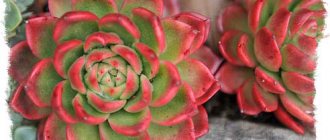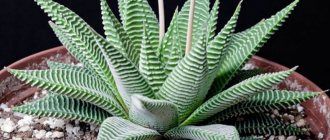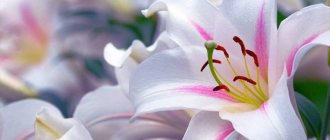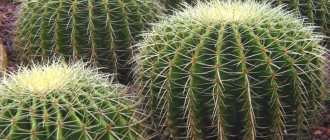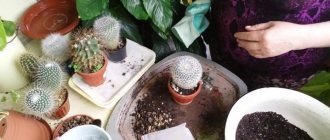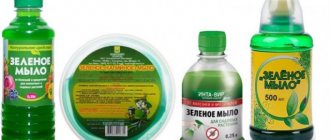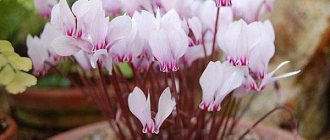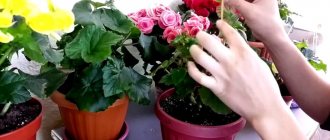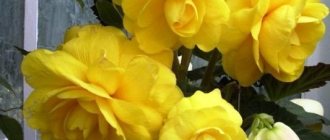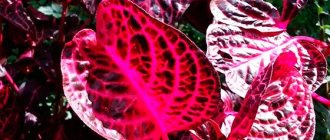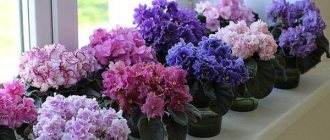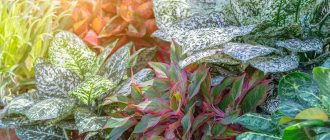Flower growers regularly replenish their home collection with new medicinal or decorative species. They are looked for in special stores, greenhouses, brought from friends or brought from distant countries. A message about a houseplant will help you learn about the conditions of keeping, the characteristics of flowering or fruiting, diseases and the effects of flowers on humans.
Drug group
Lovers of indoor flowers notice their effects on health and mood. Some species have healing properties, so it is useful to place pots with such plants in work areas, bedrooms and children’s rooms.
Famous medicinal flowers:
- geranium;
- Sansevieria;
- Kalanchoe;
- aloe;
- Golden mustache.
Geranium occupies a leading place in floriculture. It attracts attention with bright caps of flowers, and the plant also purifies polluted air. Pelargonium with red petals has strong healing properties. It has a sedative and anti-inflammatory effect on the body. Medicinal decoctions from geranium normalize heart function, heal chronic diseases of the digestive tract, and lotions cleanse the skin of ulcers and boils.
Sansevieria is also called pike tail or mother-in-law's tongue. The plant kills infections that live in the air. A tincture on its leaves helps heal appendages, and decoctions strengthen the immune system during flu epidemics or other colds.
In Russia and neighboring countries, a particularly popular indoor flower is Kalanchoe, or homemade ginseng. It is used to treat fistulas, ulcers, boils and wounds. Juice is extracted from the leaves of the plant, which must be filtered and sterilized. Then a piece of gauze is soaked in it and applied to the sore spot. And to strengthen the immune system, you can eat one tablespoon of babies every day - growths that are cut from the leaves. They are also added to salads.
In the Russian botanical atlas there is another famous medicinal plant - aloe, or agave. Its juice heals wounds, softens corns, and cleanses the skin of acne. The liquid is added to face and hair masks, and whitening scrubs are prepared on its basis.
Golden mustache, or callisia, is also known for its healing properties. Decoctions and tinctures are prepared based on the leaves. They help with burns and lichen, speed up metabolic processes in the body and lower blood sugar levels. The golden mustache also eliminates the symptoms of heart disease, strengthens the immune system and normalizes the functioning of the gallbladder.
Ornamental plants
There are two types of flowers - decorative-leaved and decorative-flowering. They differ in their structure and appearance. The main structural features of indoor plants that belong to the decorative deciduous class are that they do not bloom. They are kept indoors for their beautiful leaves. List of popular potted plants:
- myrtle;
- arrowroot;
- variegated codiaum.
Myrtle looks like grass; it is a plant with a large number of small leaves of bright green color. It does not require special care, but is valued for its fragrant, pleasant aroma. Arrowroot attracts with the interesting colors of the leaves - dark, covered with light spots. They grow in pairs, the stems are located opposite each other. The plant develops well in any conditions, it is unpretentious.
Variegated codiaum looks unusual: it has long leaves with yellow and red veins. The plant needs moisture and constant warmth. If it doesn’t like the climate of the room, it will shed its leaves.
List of flowering ornamental plants:
- anthurium;
- balsam;
- hibiscus;
- lobelia.
Perennial anthurium flowers and leaves have an unusual shape. There are several types of plants - with green, white, red, yellow and almost black petals. The tall flower loves warmth, so it needs to be looked after. The balsam bush blooms for quite a long time. In warm weather, it is covered with a cap of small buds, and dark green leaves can reach 50 cm in length. The plant loves moisture very much; it needs not only to be watered, but also sprayed or wiped with a damp cloth.
Hibiscus is a tree plant and blooms almost constantly. The petals are large, but very thin, and feel like litmus paper. Its peculiarity is that flowering lasts only one day; the next morning the buds wither and fall off. But in their place, new ones appear in the evening.
Ampelous lobelia should be positioned high, because its stems grow downwards and entwine the flowerpots. During flowering, which lasts almost the whole year, it will decorate a balcony or loggia. This representative of the flora has several colors - from milky white to deep blue. Small flowers look like bells; they bloom and almost completely hide the greenery.
The world around us 1st grade
Indoor plants in our home
The beauty of plants has a positive effect on our environment. Indoor plants not only decorate our apartments, but also purify the air in them. Plants absorb carbon dioxide and release oxygen necessary for human life.
Houseplants
| Croton | Croton blooms unattractively and is quite rare in apartment conditions. The main decoration is multi-colored variegated leaves. The plant's homeland is considered to be the tropics of Southeast Asia, the Pacific Islands and the Malaysian archipelago, as well as India. Under natural conditions, crotons grow up to 3 m, and in indoor conditions you can achieve success of 1.5 m |
| Monstera | The homeland of this cute “monster” is the West Indies and South America. Monstera is a beautiful evergreen plant that belongs to the liana family. This is one of the most common indoor plants. Young leaves are whole, with age they become perforated, and then completely split. The gigantic size of the plant and its bizarre appearance served as the basis for the name of the entire genus (from monstrum - monster, and perhaps “bizarre”). |
| Chlorophytum | Chlorophytum is a plant from the herbaceous genus. The distribution area of the majority is the subtropical and tropical regions of South America and Africa, as well as the territory of the island of Madagascar, South Asia and Australia. In addition to its purifying and oxygenating functions, this plant regulates the humidity level in the room. According to numerous studies, chlorophytum has an antimicrobial effect and significantly reduces the number of harmful and pathogenic organisms. |
| Dieffenbachia | A very spectacular ornamental plant, valued for its elegant large leaves. Dieffenbachia is a tropical plant. This home flower is recommended to grow for all those who live near large industrial enterprises and highways. Dieffenbachia perfectly absorbs harmful substances, releasing oxygen. It received its name from the Austrian botanist Heinrich Schott in honor of Joseph Dieffenbach, the senior gardener of the Schönbrunn Palace, who oversaw the imperial botanical gardens in Vienna. |
The leaves of plants consist of a thin plate and a petiole, that is, a stalk. If the plate looks solid, then the sheet is said to be simple. If it is divided into several smaller leaves, then it is complex. Each plant has leaves shaped to absorb as much sunlight as possible.
Identify indoor plants by their leaves. Use arrows to indicate the names of the plants.
What are these plants called? Arrange the numbers. 1. Gloxinia 2. Fuchsia 3. Aloe 4. Cyclamen 5. Tradescantia
Draw 1 - 2 indoor plants that grow in your home or paste a photo.
Fruits on the windowsill
Although the main function of indoor plants is to saturate the air with oxygen, you can select fruit-bearing species from an encyclopedia or catalog. Not all garden crops are adapted to live in a house, but some exotic plants tolerate the conditions of a city apartment or private house:
- citruses;
- pomegranate;
- banana;
- a pineapple;
- date fruit;
- olive.
How many books have been written about floriculture with descriptions and beautiful pictures, but still not all plant lovers know that citrus fruits can be grown on a windowsill. Lemons, limes, tangerines and kumquats are quite capricious; they can get sick and refuse to bear fruit. Sometimes they become covered with spider mites. But with proper care at home, you can get small, tasty fruits. Citrus fruits love moisture and warmth; they need fertilizing and replanting.
Miniature grenades appeared recently, but have already taken root in the CIS countries. In addition to small sweet fruits, the plant will delight the owner with beautiful fragrant flowers. In warm, sunny areas, you can grow an ornamental or edible banana. The first will only bloom, the second will produce small fruits. But they taste no different from store-bought ones.
Today, all information about indoor plants is available to any gardener. Many people already know that you can grow a pineapple from a leaf rosette at home. The fruit will be small, the leaves will be huge. And for rapid development, you need to periodically fumigate the pot with smoke and frequently water the soil. Pineapple is not capricious, it quickly takes root and rarely gets sick, but still requires proper care.
The date palm is only suitable for houses with high ceilings, because it reaches two meters in height. The plant will take root in cool climates; it does not like heat, but prefers humidity. By the end of summer, the palm tree will begin to bear fruit; it is better to dry the dates, since they are not particularly tasty when fresh. Breeders also bred the indoor olive tree. For your home, you can buy several different varieties that produce black and green fruits. But it is not only the edible qualities of the tree that attract gardeners. The plant itself is very beautiful, it is also suitable as a decorative one.
You can successfully grow feijoa, mango, avocado and even rambutan at home. Exotic plants easily take root if you provide them with native conditions - a lot of light, warmth and a high level of humidity.
Project 1st class “B” GOU secondary school 1623 “My houseplant” - presentation
Project 1st grade “B” GOU Secondary School 1623 “My Houseplant”
Main goal: to help the teacher identify the psychophysiological readiness of each child for learning, the degree of adaptation of the child at school, speech development, development of creative abilities, formation of the ability to use reference literature, familiarization with indoor plants, their growing conditions , ways to care for plants
Duration (planned for the project as a whole): 3 lessons Resources: family, reference books, encyclopedias, dictionaries. People: teacher, students, parents Organization of activities: individual, frontal Equipment: computer, printer, projector, camera, indoor plants Assessment system, summing up: verbal assessment, emotional perception of classmates, exhibition of works, class mini-encyclopedia “Plants on the windowsill”
PLANNED RESULTS OF PRIMARY GENERAL EDUCATION. PROGRAM FOR THE FORMATION OF UNIVERSAL LEARNING ACTIONS (PERSONAL AND META-SUBJECT RESULTS) Section “Personal universal educational actions” is the internal position of the student at the level of a positive attitude towards school, orientation to the meaningful moments of school reality and adoption of the model of a “good student”; focus on understanding the reasons for success in educational activities; educational and cognitive interest in new educational material and ways to solve new particular problems Section “Regulatory universal educational actions” plan your action in accordance with the task and the conditions for its implementation, including internally performing educational actions in a materialized, vocal and mental form .
The section “Cognitive universal educational actions” searches for the necessary information to complete educational tasks, constructs a speech statement in oral and written form. Section “Communicative universal learning activities” ask questions; adequately use speech means to solve various communicative tasks; build a monologue statement, master the dialogical form of speech.
Lesson plan: 1 lesson: -introduction to the plants of the cool green corner, training in recognizing indoor plants; — distribution into groups; -information sources; - planning work Lesson 2: - collecting factual material, selecting and creating visual materials (drawings, photographs); — compilation and design of a personal page for the future mini-encyclopedia; Lesson 3: reports, (stories, presentations) of group participants, discussion and evaluation of work
Ermakov Vitaly
A small tree, the trunk is intertwined, there are many leaves, they fall, but very few, the leaves are green with white spots, and on the other side they are light green. Ficus benjamina does not bloom and does not smell. This plant loves light, so it is on our windowsill, but it does not like bright sun. I water my Ficus Benjamin once a week and sometimes wash it in the bathroom shower. Vergazova Anastasia
Money Tree. My favorite houseplant is called the money tree. It is called that because it looks like a tree. Like a tree, it has a trunk, branches and leaves. They call it money because its leaves look like coins. This plant was brought from Africa, so it loves light and does not need to be watered often. In our family, my mother takes care of this plant. I just water it. Minkin Misha
Violets love sunlight very much. I love the sun too. Everything grows faster in the sun. My mother takes care of the violets, and I often help her water the flowers. Shabashev Nikolay
Blooming exotics
Gardeners enthusiastically read herbal books, encyclopedias with photographs and names of indoor plants in alphabetical order, but are afraid to buy exotic plants. In fact, some unusual flowers take root well in the apartment:
- sprekelia;
- Lachenalia;
- slipway;
- tuberose;
- tillandsia;
- Streptocarpus.
The rare sprekelia flower is a bulbous plant that blooms in the spring. It has unremarkable long light green leaves. But its flowers cannot be confused with others. The bright red petals are simply huge, the buds resemble an unusual elongated orchid. Lachenalia also looks unusual for Slavic countries. Its flowers are collected in large clusters, and in appearance they look like large tubes. The colors can be different - yellow, red or orange. The petals stand out with flame against the background of dark foliage. The flowering period depends on the variety - it can last from spring to autumn or from winter to March.
Stapelia surprises even experienced botanists with its size. She has huge fleshy flowers, their petals are covered with fluff, they resemble a starfish. Color - from golden to purple with small patterns. But the plant is not suitable for everyone - its aroma is quite unpleasant, similar to the smell of rotten meat.
Tuberose has the opposite effect. It is so fragrant that its pollen is used in perfumery and cosmetology. In the last century, the plant was very popular, but they did not have time to spread it, and now its time has passed - it is almost impossible to find it at home. The appearance of tuberose is also attractive - the snow-white flowers are very large, similar to lotuses.
Blue Tillandsia is distinguished by the original shape of its bract, which is often confused with buds. It is flat, elongated and looks like a Christmas tree, and is painted in a delicate lavender shade. Tillandsia petals are small and appear on the sides of the bract. They have a bright blue or blue color.
Streptocarpus is the result of many years of work by breeders. This plant is a hybrid of many flowers. When its buds bloom, they look like large bright butterflies. The petals are very bright - purple, blue, blue, yellow or pink. But on the outside they are white, as is the border around the edges. Streptocarpus blooms for a long time, only 5-6 buds appear, but they are very large.
There are other exotic plants that grow well at home. But some species scare off their owners with an unpleasant odor, while others are generally considered predators - they eat insects and small animals.
